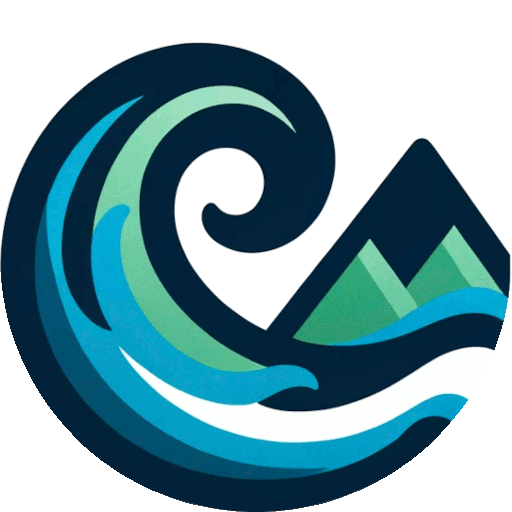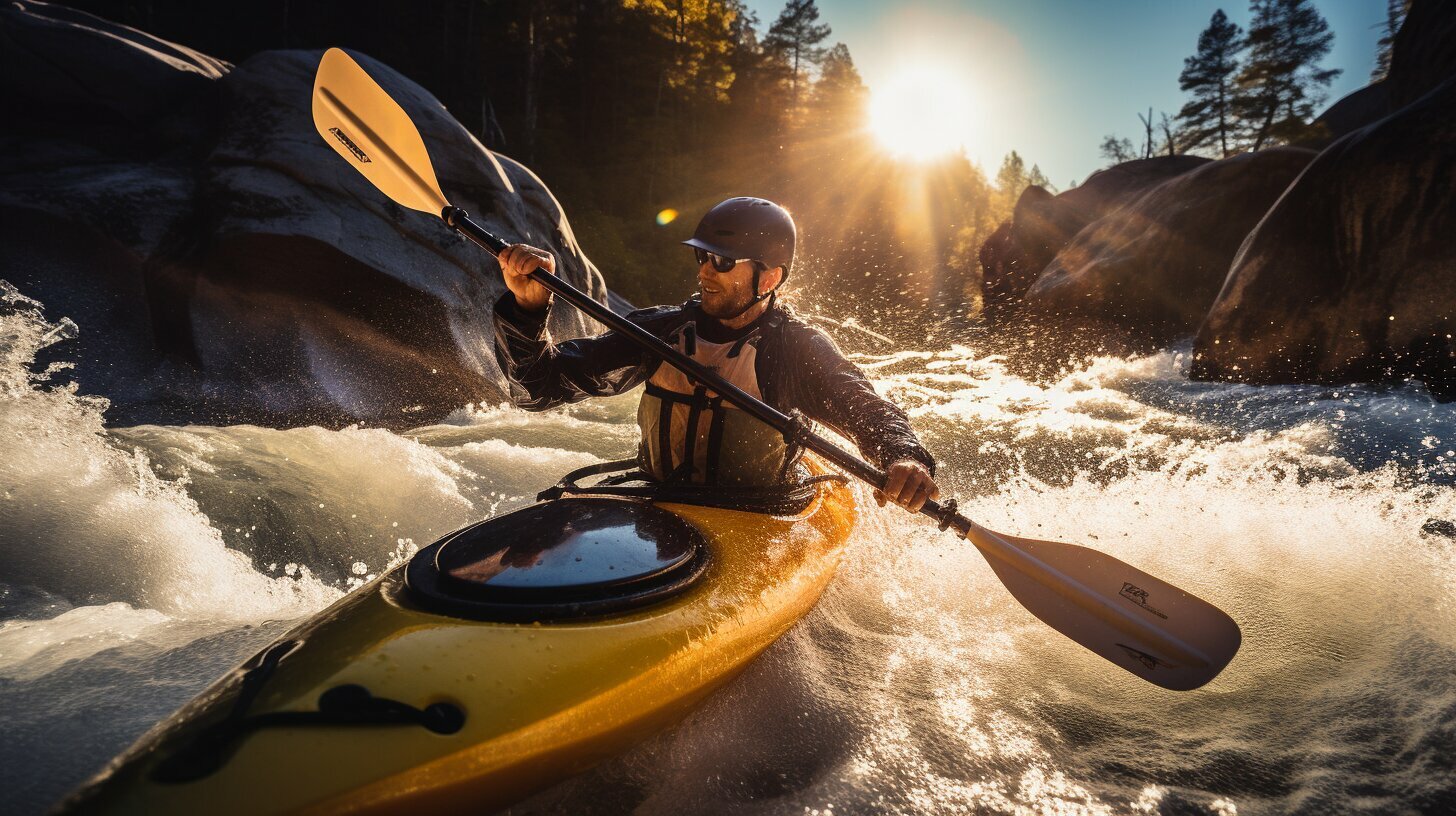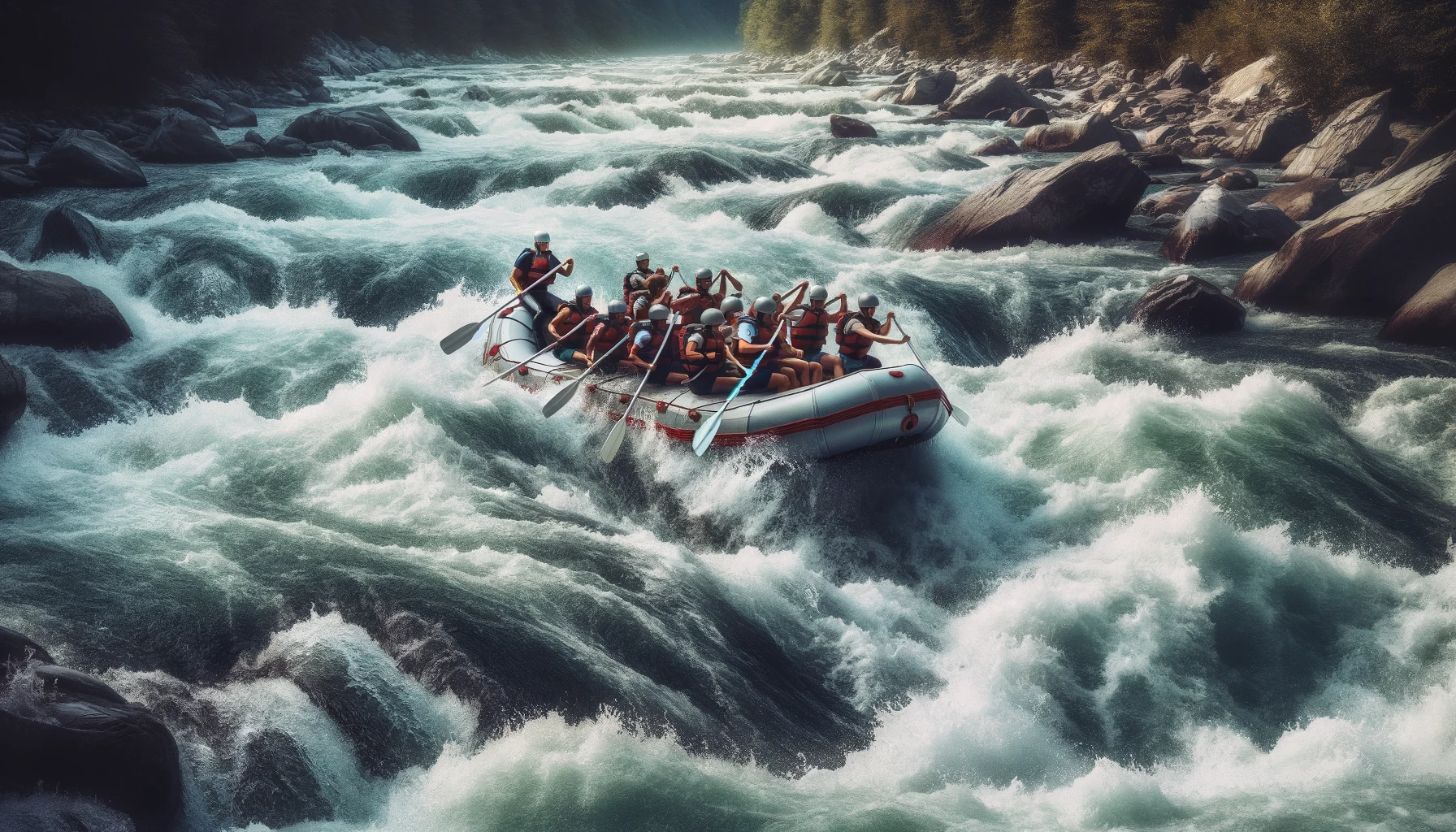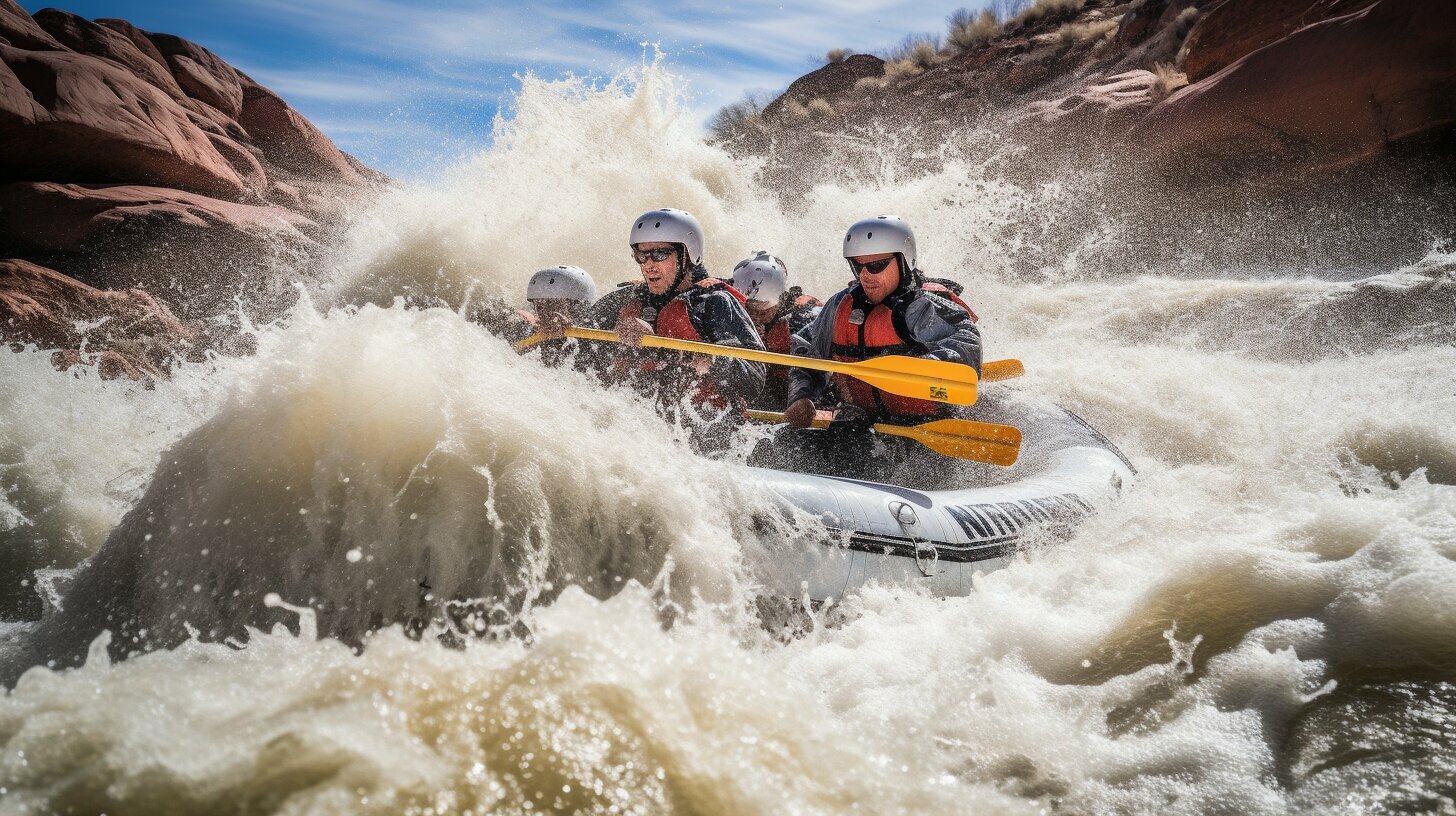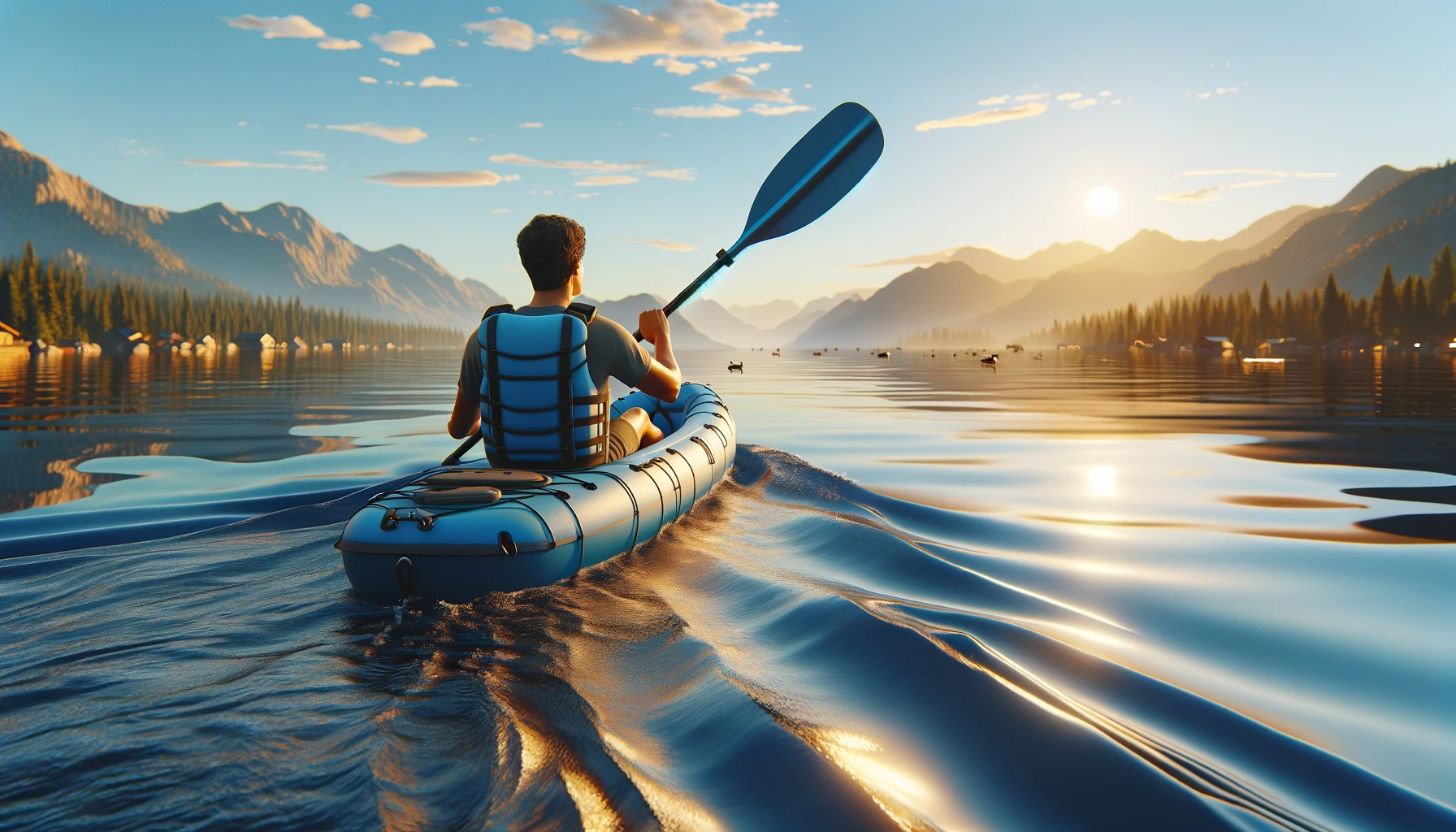Are you looking to take your kayaking skills to the next level? Whether you’re an experienced kayaker or just starting, there’s always room to improve. Learning advanced kayaking techniques can help you navigate challenging environments with ease and confidence, while also enhancing your overall paddle technique.
In this guide, we’ll explore a range of advanced kayaking techniques for different environments, from navigating rapids to sea kayaking and everything in between. You’ll learn how to read the water, execute precise paddle strokes, and maintain balance and stability in turbulent conditions. With consistent practice and dedication, you can elevate your kayaking abilities and take on new challenges with confidence.
Key Takeaways
- Advanced kayaking techniques can improve your kayak skills and paddle techniques in different environments.
- Learning to navigate rapids with confidence requires precise paddle strokes, balance, and stability.
- River kayaking techniques involve edging, ferrying, eddy turns, and using currents and water features to your advantage.
- Essential advanced sea kayaking techniques include bracing against waves, navigating tidal currents, understanding wind and weather patterns, and practicing effective communication and self-rescue.
- Mastering kayak rolling techniques and rescue techniques can enhance safety on the water.
- Fine-tuning your paddling technique and enhancing stability through advanced kayak bracing techniques can improve your overall kayaking proficiency.
- Developing a consistent training routine can help you practice and refine your advanced kayaking techniques over time.
Whitewater Kayaking Tips: Navigating Rapids with Confidence
Whitewater kayaking requires a unique set of skills and techniques to navigate rapids with confidence. Advanced kayaking techniques are essential for handling the unpredictable nature of whitewater, allowing you to maneuver through turbulent water and avoid hazards. Here are some tips to improve your whitewater kayaking skills:
- Read the river: Before venturing into whitewater, take the time to study the river and its features. Look for eddies, waves, and obstacles that may impact your route. By correctly interpreting the water, you can choose the best line to navigate through rapids.
- Choose the right line: Once you have read the river, select the line that best suits your skill level and kayak type. Remember to avoid hazards and stay in control of your kayak at all times.
- Execute precise paddle strokes: Proper paddle strokes are crucial in whitewater kayaking. You’ll need to be able to make quick and accurate paddle strokes to steer your kayak and maintain balance. Practice your forward stroke, draw stroke, sweep stroke, and brace stroke to enhance your paddling technique.
- Maintain balance and stability: Staying upright in turbulent water requires excellent balance and control. You can improve this by practicing edging, a technique that involves tilting your kayak towards the wave to increase stability. You can also try sculling, which involves rapid side-to-side paddle strokes to maintain balance.
By mastering these advanced kayaking techniques, you’ll be able to navigate whitewater rapids with confidence and improve your overall kayaking abilities. Remember to always prioritize safety and wear appropriate gear, like a helmet and personal flotation device.
Disclosure: When you buy through links on our site, we may earn an affiliate commission.
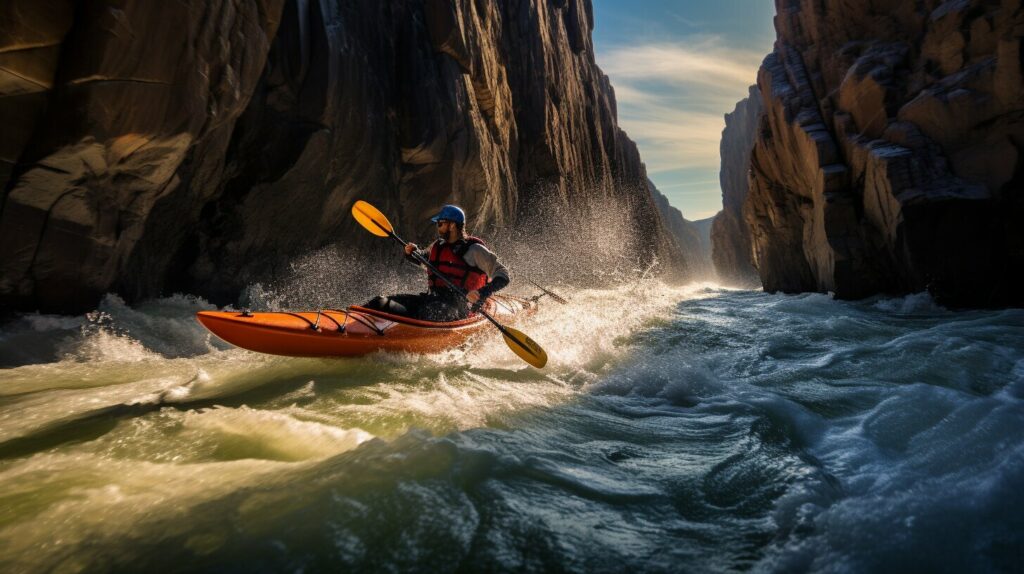
Mastering River Kayaking Techniques for Precision and Control
As you progress in your kayaking journey, mastering river kayaking techniques becomes crucial. These advanced kayaking techniques can help you navigate challenging river rapids with precision and control. Here are some techniques to take your river kayaking skills to the next level:
1. Edging
Edging is a technique that involves tilting your kayak to one side while keeping your body upright. This helps you turn quickly and efficiently while maintaining control and stability. To edge your kayak, lean your weight in the direction you want to turn and use your paddle to balance and maintain control.
2. Ferrying
Ferrying is a technique used to cross the river diagonally, allowing you to navigate around obstacles and reach your desired location. This is done by paddling upstream at an angle while using the current to move across the river. It takes practice to master this technique, but it can be a valuable tool for river kayakers.
3. Eddy Turns
Eddy turns are used to enter and exit eddies, which are calm areas behind rocks or other obstructions in the river. To perform an eddy turn, you need to paddle towards the eddy line at an angle, lean into the turn, and use a sweep stroke to turn into the eddy. Once in the eddy, you need to use a backstroke or a draw stroke to maintain your position and avoid being pushed back into the current.
4. Using Current and Water Features
Learning to read and use the river’s current and water features is essential for advanced river kayaking. By understanding how the water flows and interacts with rocks, drops, and other features, you can use the river’s energy to your advantage and avoid obstacles. This involves paying attention to the gradient, water speed, and direction of the river and adapting your paddling technique accordingly.
Mastering river kayaking techniques takes time and practice, but it can greatly enhance your kayaking experience. By mastering techniques such as edging, ferrying, eddy turns, and using current and water features, you can navigate rivers with precision and control. Remember to always prioritize safety and seek professional instruction if needed.
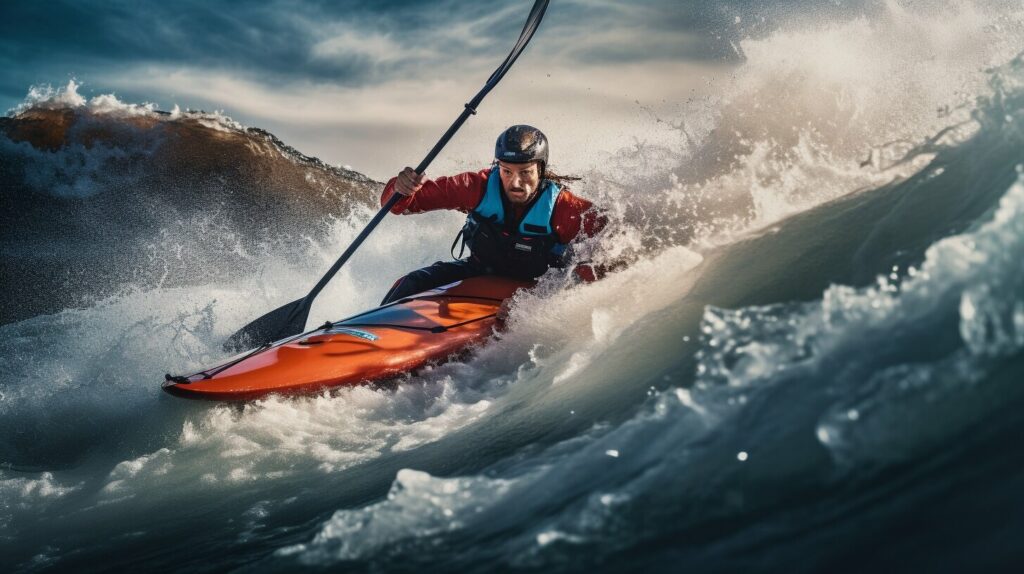
Conquering the Sea: Essential Advanced Sea Kayaking Techniques
Sea kayaking offers a unique and thrilling experience, but it can also be challenging and unpredictable. To navigate open water with confidence, you need to master advanced kayaking techniques specifically designed for sea kayaking. These techniques will help you improve your stability, control, and safety in various sea kayaking environments.
Bracing against Waves: When sea kayaking, learning to brace against waves is crucial. The low brace and high brace techniques can help you maintain balance and prevent capsizing in rough waters. Practice these techniques in calmer waters before attempting them in choppy or tidal waters.
Navigating Tidal Currents: Sea kayaking in tidal waters can be tricky, but with proper training, you can navigate safely and efficiently. Understanding tidal currents and how to use them to your advantage is key. You can also use eddy turns to maneuver in and out of tidal currents with ease.
Understanding Wind and Weather Patterns: Wind and weather conditions can change quickly on the open sea, which is why it’s essential to understand their effects on your kayaking. Always check the weather forecast before setting out, and learn how to paddle efficiently against wind and waves. Also, practice self-rescue techniques to prepare for emergency situations.
Practicing Effective Communication and Self-Rescue: When sea kayaking, communication with your fellow kayakers is vital. Ensure you have a reliable communication system, such as hand signals or a two-way radio. Additionally, practice self-rescue techniques, such as the Eskimo roll, paddle float rescue, and T-rescue, to remain safe in emergency situations.
Tip: When sea kayaking, always wear a personal flotation device and dress appropriately in quick-drying, weather-resistant clothing. Also, carry safety equipment, such as a whistle, signaling mirror, and spare paddle.
Mastering the Roll: Advanced Kayak Rolling Techniques
One of the most essential skills for any kayaker is the ability to perform a reliable and efficient roll. In challenging whitewater and open water situations, a strong roll can mean the difference between a successful self-rescue and a dangerous swim. In this section, we will explore advanced kayak rolling techniques to help you develop a consistent and confident roll.
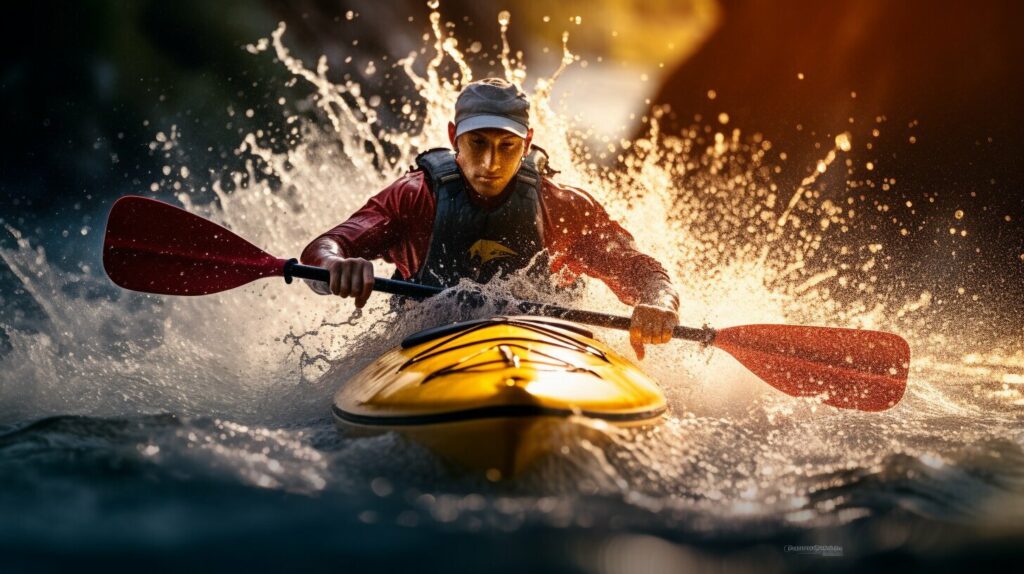
There are several variations of the kayak roll, including the sweep roll, C-to-C roll, and hand roll, among others. Each roll has its own unique steps and nuances, and it is important to explore and practice different variations to find the one that works best for you.
One common mistake many kayakers make when learning to roll is relying too heavily on upper body strength. While upper body strength is certainly important, the key to a successful roll is proper technique, using the entire body to generate momentum and power. By incorporating body rotation, hip snap, and proper paddle placement, you can execute a smooth and efficient roll every time.
Drills and exercises can be incredibly helpful for improving roll consistency and building confidence in challenging environments. One effective drill is the “screw roll,” which involves submerging the paddle and using it to propel yourself back to the surface. Another useful exercise is the “off-side roll,” which involves practicing the roll on the non-dominant side to improve overall balance and coordination.
Remember, developing a strong roll takes time and practice. It is important to seek professional instruction and guidance, especially when learning advanced techniques. With dedication and perseverance, you can master the kayak roll and enhance your safety and confidence on the water.
Kayak Rescue Techniques: Enhancing Safety on the Water
As you explore advanced kayaking techniques, it’s essential to prioritize safety on the water. Whether you’re paddling in rapids, rivers, or open water, emergencies can happen. That’s why mastering kayak rescue techniques is crucial for every kayaker.
One of the most fundamental rescue techniques is the T-rescue. It’s used to help a capsized kayaker get back into their boat and involves two kayakers working together. To perform the T-rescue, first, one kayaker stabilizes the capsized kayak as the other brings their boat alongside. Then, the kayaker in the upright boat reaches across to grab the capsized boat’s grab loop and uses the T-grip on their paddle to create a stable platform for the capsized kayaker to climb back into their boat.
Another useful rescue technique for whitewater kayaking is the Eskimo rescue, also known as the roll rescue. This rescue is performed by a kayaker who has capsized and is still in their kayak. To perform the Eskimo rescue, the kayaker leans forward and submerges their paddle, with the blades perpendicular to the water’s surface. This motion creates a platform for the kayaker to roll back upright.
In open water situations, the paddle float rescue can be a lifesaver. This rescue involves the use of an inflatable paddle float secured to one end of the paddle. The float creates a buoyant outrigger to stabilize the capsized kayaker’s boat while they re-enter it. To perform this rescue, the kayaker secures the float to their paddle, puts the paddle across the kayak, and climbs back into the boat from the opposite side.
Swiftwater rescues require advanced skills, including the use of ropes and anchors. These rescues should only be attempted by experienced kayakers and preferably with professional assistance. To be prepared for swiftwater rescues, it’s vital to practice advanced rope techniques regularly and carry appropriate rescue gear.
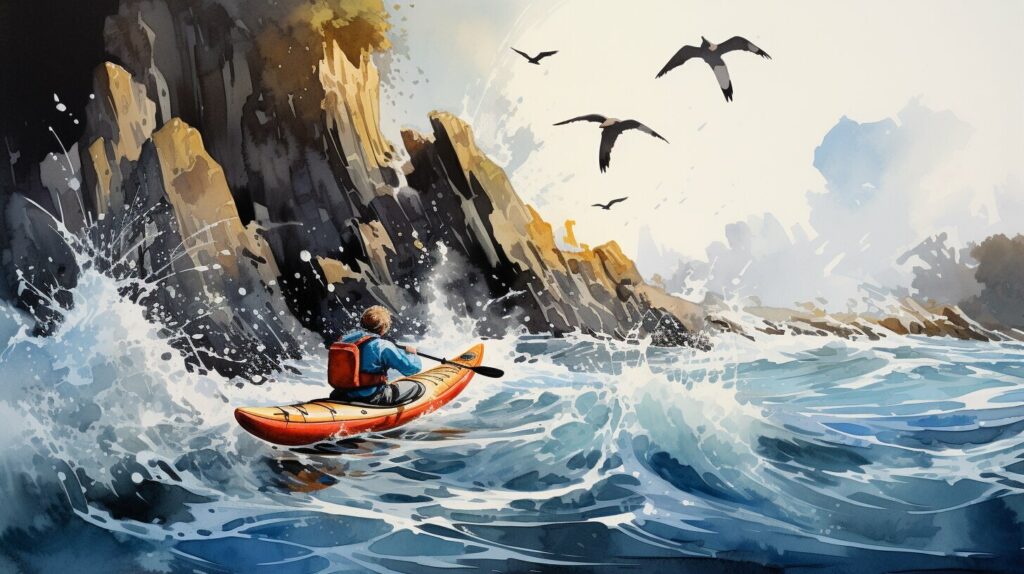
By mastering kayak rescue techniques, you can help ensure the safety of yourself and others on the water. Remember to always prioritize safety, carry appropriate gear, and practice rescue techniques regularly.
Mastering Kayak Strokes: Fine-Tuning Your Paddling Technique
One of the fundamental skills of kayaking is mastering different paddle strokes. While beginners may focus on basic strokes such as the forward stroke and sweep stroke, advanced kayakers know the importance of refining their technique for maximum efficiency and control on the water. In this section, we will explore advanced kayak strokes that will help elevate your paddling prowess.
The Forward Stroke
The forward stroke is the most basic and important stroke for kayaking. Advanced kayakers use this stroke to progress quickly and efficiently through the water. To refine your forward stroke technique, start by ensuring your body is in the proper position in the boat. Keep your back straight, engage your core muscles, and maintain a loose grip on the paddle. As you paddle, focus on keeping your arms straight and using your torso to rotate and propel the boat forward. This will reduce fatigue and improve your speed on the water.
The Reverse Stroke
The reverse stroke is used to slow down, stop, or back up your kayak. Advanced kayakers use this stroke to maintain control and precision in tight spaces. To refine your reverse stroke technique, start by rotating your torso and placing your paddle in the water on the opposite side of your kayak. Pull the paddle towards your hip, keeping your arms straight and torso rotated. This will slow or stop the kayak and allow you to maneuver in reverse.
The Sweep Stroke
The sweep stroke is used for turning your kayak. Advanced kayakers use this stroke to turn quickly and efficiently without losing speed. To refine your sweep stroke technique, begin by placing your paddle in the water to the side of your kayak. Sweep the paddle in a wide arc towards the stern of your boat while rotating your torso. This will cause the kayak to turn in the direction of the stroke.
The Draw Stroke
The draw stroke is used to move your kayak sideways. Advanced kayakers use this stroke to move their kayak laterally while maintaining forward momentum. To refine your draw stroke technique, start by placing your paddle in the water near the bow of your kayak. Pull the paddle towards your hip while keeping your arms straight and torso rotated. This will cause your kayak to move sideways in the direction of the stroke.
The Brace Stroke
The brace stroke is used for stability and balance. Advanced kayakers use this stroke to maintain stability in rough water conditions. To refine your brace stroke technique, start by leaning your kayak to one side and placing the paddle flat on the water. Push down on the paddle while keeping your upper body upright to prevent capsizing. This will improve your balance and stability on the water.
Dedicate time to perfecting your advanced kayak strokes to enhance your paddling technique. Incorporate drills and exercises into your training routine to improve efficiency, power, and control on the water. By mastering your paddle strokes, you will become a more proficient kayaker capable of tackling any water environment with confidence.
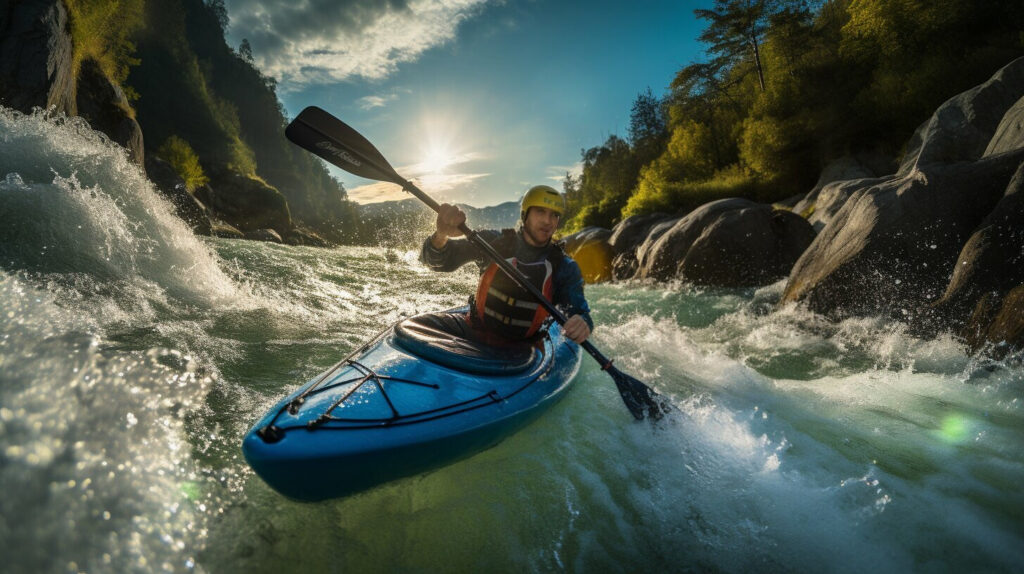
Enhancing Stability: Advanced Kayak Bracing Techniques
When it comes to advanced kayaking techniques, mastering kayak bracing is crucial for maintaining stability on the water. In challenging conditions, proper bracing techniques can prevent capsizing and keep you safe.
The low brace is a fundamental technique for stabilizing your kayak. To perform a low brace, lean to the side and place your paddle flat on the water perpendicular to your kayak. Push down on the paddle to create support and prevent your kayak from tipping over. The high brace is similar, but instead of pushing down, you’ll push up on the paddle to regain balance.
Another useful technique is the sculling brace, which involves sweeping your paddle in a figure-eight motion to create stability. This technique requires practice to master, but it can be highly effective in challenging conditions.
The hanging draw brace is a more advanced technique that involves using your paddle to pull your kayak towards an obstacle while bracing against it to maintain stability. This technique is especially useful for maneuvering through narrow channels or around rocks and obstacles.
Remember, advanced bracing techniques require practice and patience to master. Incorporate these techniques into your training routine and seek out professional instruction if needed. With proper technique and practice, you’ll be able to handle challenging conditions with confidence and control.
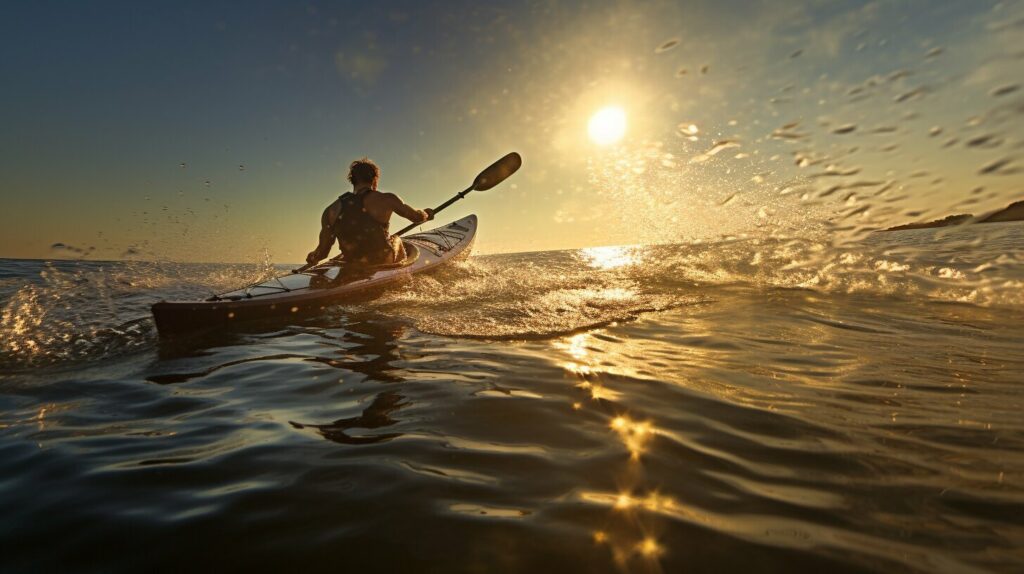
Developing a Training Routine: Putting Advanced Techniques into Practice
Now that you’ve learned about various advanced kayaking techniques, it’s essential to put them into practice. Developing a training routine will help you refine your skills and ensure you’re prepared for any situation that may arise.
Start by setting specific goals. Determine which techniques you want to focus on and create a schedule that incorporates drills and exercises to practice them. For example, if you want to improve your roll, set a goal to perform a certain number of successful rolls each week.
Incorporating interval training can also help you build endurance and improve your overall kayaking ability. Consider mixing up your routine with high-intensity intervals, followed by shorter rest periods to keep your body challenged and prevent plateauing.
Remember to seek professional instruction if you’re unsure about a particular technique or need help with form. A skilled instructor can help you identify your weaknesses and guide you in the right direction.
Another important aspect of your training routine is safety. Always practice advanced techniques in a safe environment with proper safety equipment, such as a PFD and helmet. Never attempt techniques beyond your skill level, and always paddle with a partner or in a group.
As you progress and refine your skills, don’t be afraid to explore new techniques and challenge yourself. Incorporating advanced techniques into your kayaking repertoire will elevate your abilities and enhance your overall kayaking experience.
Remember, developing a training routine and practicing advanced kayaking techniques will not only improve your skills but also enhance your safety on the water. With dedication and perseverance, you can master these techniques and take your kayaking to the next level.
Conclusion
By now, you have a solid understanding of the essential skills required to navigate different kayaking environments with confidence and control.
Practice Makes Perfect
Remember, mastering advanced kayaking techniques requires consistent practice and dedication. Use the tips and strategies outlined in this guide to develop a training routine that works for you, and seek professional instruction to refine your skills further.
Stay Safe on the Water
As you continue to explore new kayaking environments and paddle more challenging waters, always prioritize safety. Be prepared for emergency situations by practicing rescue techniques and carrying essential safety gear such as a personal flotation device.
Experience the Thrill of Advanced Kayaking
With the skills and knowledge gained from this guide, you can take your kayaking abilities to the next level and experience the thrill of navigating rapids, rivers, and open water with mastery and confidence. Keep exploring and pushing your limits, and above all, enjoy the ride!
FAQ
Q: What are advanced kayaking techniques?
A: Advanced kayaking techniques refer to the skills and maneuvers that experienced kayakers use to navigate challenging water conditions, such as whitewater rapids or open sea. These techniques go beyond the basics and require a higher level of proficiency and control.
Q: Why are advanced kayaking techniques important?
A: Advanced kayaking techniques are important for several reasons. They improve overall kayak skills, allowing paddlers to handle more demanding environments. These techniques also enhance safety by providing kayakers with the knowledge and ability to handle emergency situations effectively.
Q: How can advanced kayaking techniques benefit me?
A: By mastering advanced kayaking techniques, you can become a more confident and capable kayaker. These techniques will enable you to tackle more challenging waters, navigate rapids with precision, and handle unpredictable conditions, ultimately enhancing your overall kayaking experience.
Q: Are advanced kayaking techniques difficult to learn?
A: Learning advanced kayaking techniques requires practice and commitment. While some techniques may be more challenging to master than others, with dedication and proper instruction, anyone can improve their skills and become proficient in advanced kayaking techniques.
Q: Can I learn advanced kayaking techniques on my own?
A: While it is possible to learn some advanced kayaking techniques on your own, it is highly recommended to seek professional instruction. Professional instructors can provide guidance, safety tips, and help you progress more quickly and efficiently in your kayaking journey.
Q: How long does it take to master advanced kayaking techniques?
A: The time it takes to master advanced kayaking techniques varies from person to person. It depends on factors such as previous experience, dedication to practice, and the complexity of the techniques. Consistent practice and a willingness to learn are key to speeding up the learning process.
Q: Can advanced kayaking techniques be applied to different types of kayaking?
A: Yes, advanced kayaking techniques can be applied to various types of kayaking, including whitewater kayaking, river kayaking, and sea kayaking. While some techniques may be more specific to certain environments, many principles and skills can be adapted and used across different kayaking disciplines.
Q: Are there any risks involved in practicing advanced kayaking techniques?
A: Like any water sport, kayaking carries inherent risks. Practicing advanced kayaking techniques in challenging conditions increases the potential for accidents or capsize situations. It is essential to prioritize safety, wear appropriate gear, and have a solid understanding of rescue techniques before attempting advanced maneuvers.
Q: Where can I find more resources to learn advanced kayaking techniques?
A: There are various resources available to learn advanced kayaking techniques. Professional kayaking schools, instructional videos, books, and online forums can provide valuable guidance and insights. It’s important to choose reputable sources and consider seeking hands-on instruction for the best learning experience.
Q: How often should I practice advanced kayaking techniques?
A: Consistency is key when it comes to practicing advanced kayaking techniques. It is recommended to practice regularly, ideally several times a week, to reinforce muscle memory and improve proficiency. However, the frequency of practice may vary depending on individual schedules and access to suitable kayaking locations.
